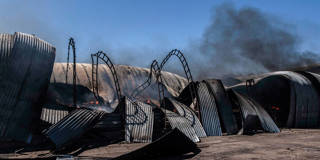As if the immediate food shortages created by Russia’s war in Ukraine were not bad enough, the disruption to this year’s harvest means that the problem will become even more acute in the fall and winter. Judging by similar episodes in the recent past, widespread social unrest is sure to follow.
MUNICH – The war in Ukraine has led to an explosion in global food prices. Before Russia’s invasion, Ukraine accounted for 10% of global exports of wheat, 13% of barley, more than 50% of sunflower oil, 5% of rapeseed oil, and 15% of corn. But these deliveries have now been disrupted on a massive scale, because Russia is blockading Ukrainian ports and bombing its grain storage facilities. In April, the global FAO food price index was already 30% higher year on year, and 62% higher than in 2020 on average. And threats to this year’s harvest mean that additional price spikes are looming.

MUNICH – The war in Ukraine has led to an explosion in global food prices. Before Russia’s invasion, Ukraine accounted for 10% of global exports of wheat, 13% of barley, more than 50% of sunflower oil, 5% of rapeseed oil, and 15% of corn. But these deliveries have now been disrupted on a massive scale, because Russia is blockading Ukrainian ports and bombing its grain storage facilities. In April, the global FAO food price index was already 30% higher year on year, and 62% higher than in 2020 on average. And threats to this year’s harvest mean that additional price spikes are looming.